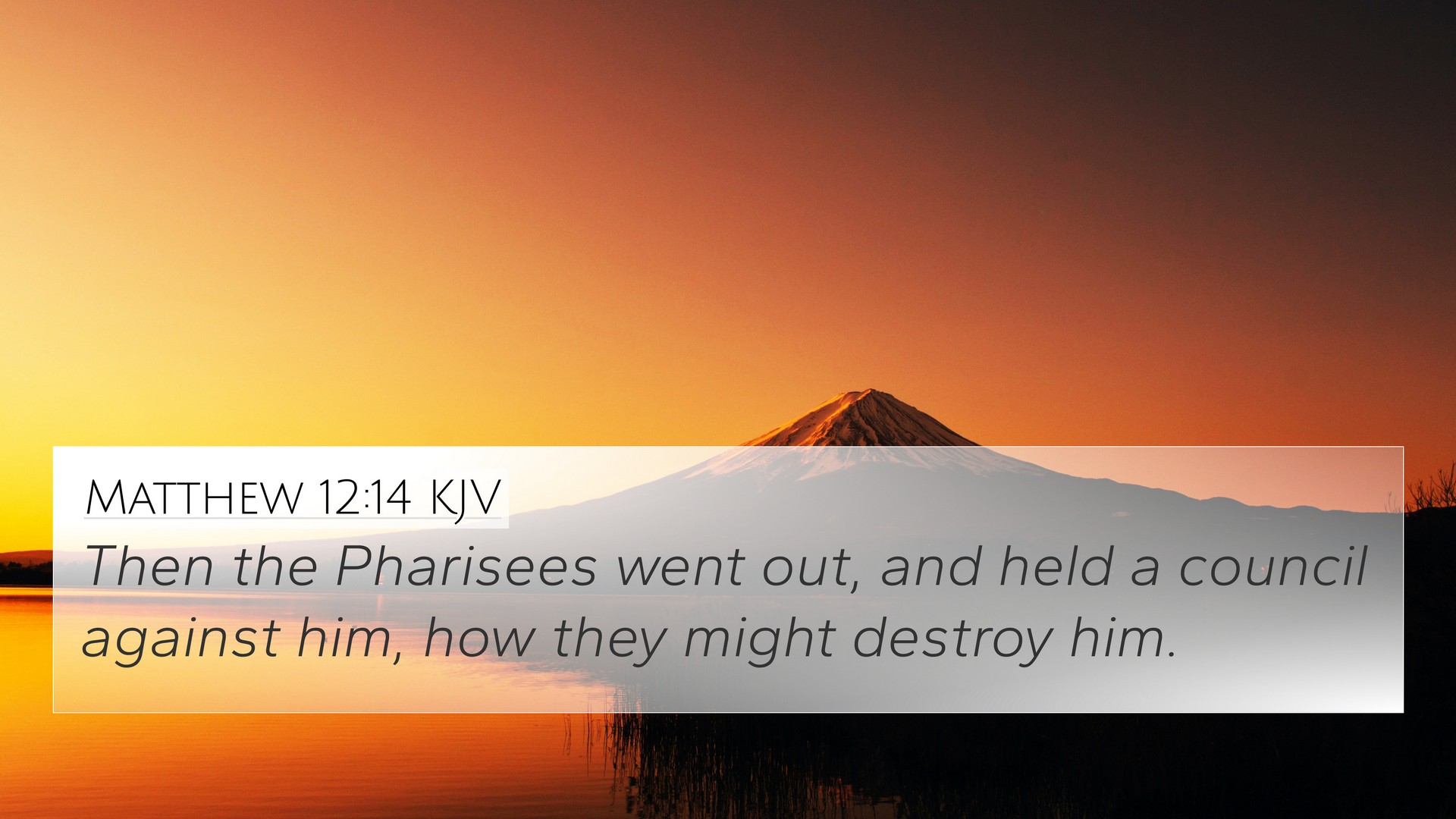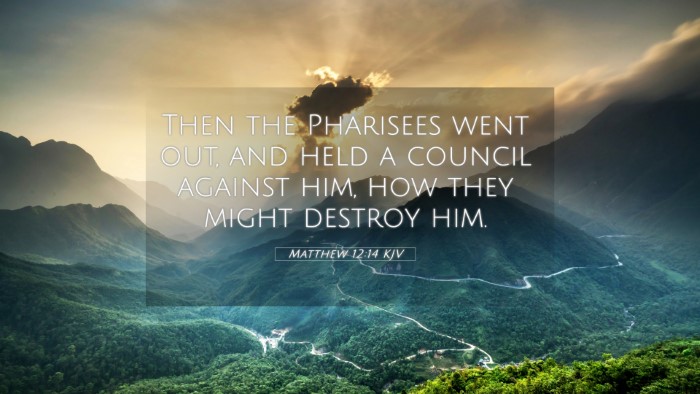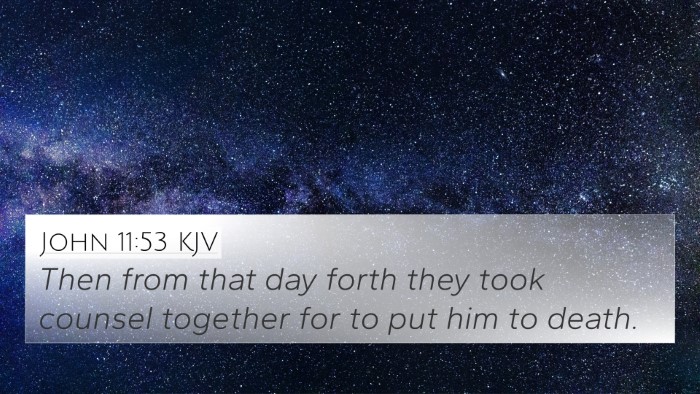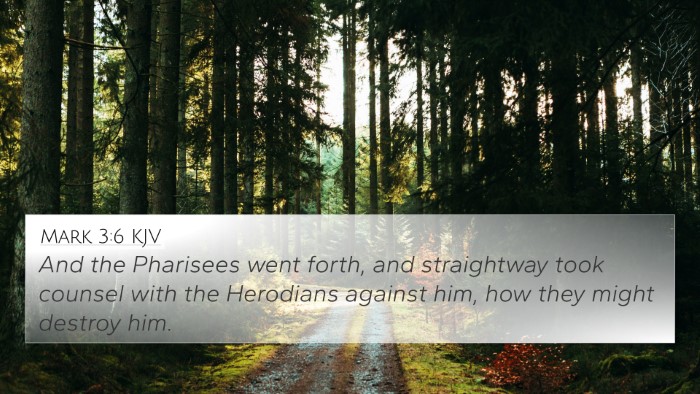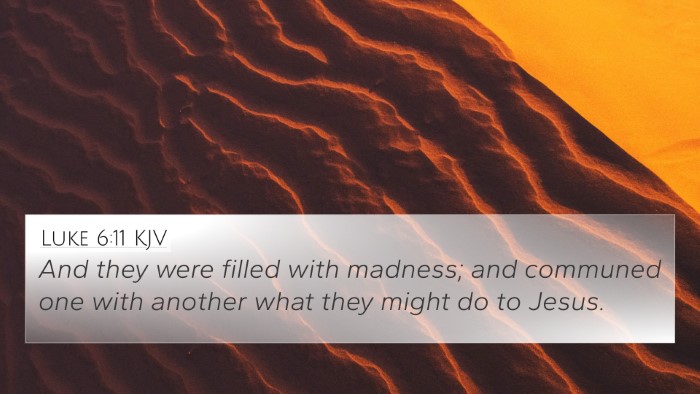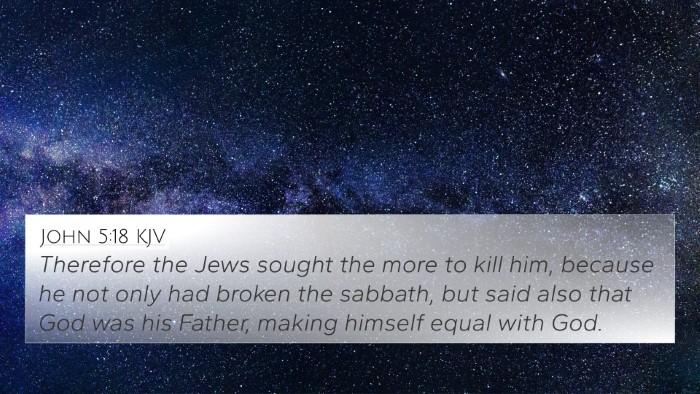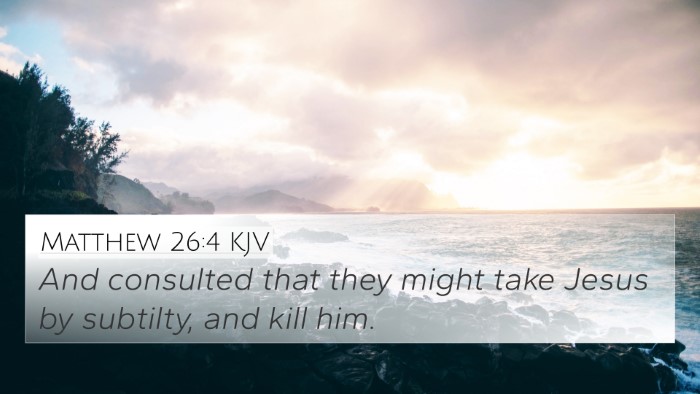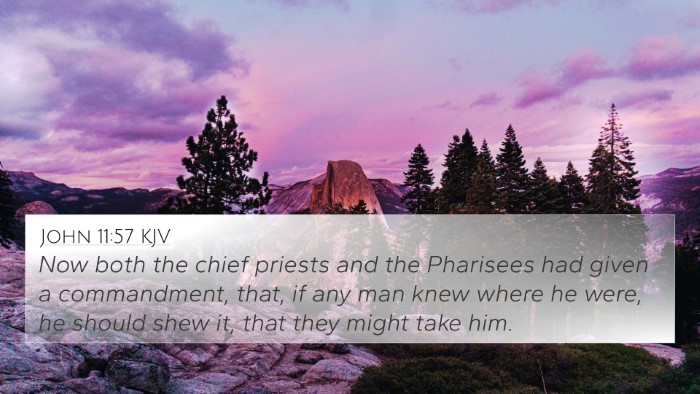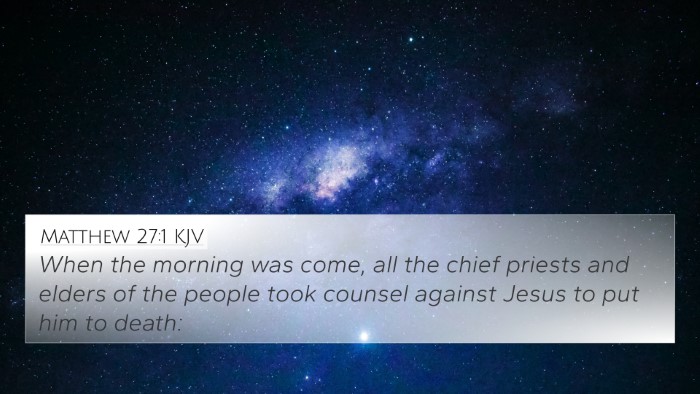Understanding Matthew 12:14
Matthew 12:14 (KJV): "Then the Pharisees went out, and held a council against him, how they might destroy him."
Verse Summary
This verse provides a significant insight into the escalating tension between Jesus and the Pharisees, showcasing their growing hostility and their determination to eradicate His influence. The plotting against Jesus marks a pivotal moment in the Gospel narrative where opposition to His teachings and miracles takes a more sinister turn.
Combined Insights from Public Domain Commentaries
-
Matthew Henry: Henry notes that this verse illustrates the malicious intentions of the Pharisees as they conspire to eliminate Jesus. Their actions reflect a deep-seated rejection of His authority and the growing fear they harbored regarding His popularity and the implications of His teachings.
-
Albert Barnes: Barnes emphasizes the significance of this interaction, highlighting that the Pharisees' council signifies an official determination to seek the death of Jesus. This act of plotting underscores the spiritual blindness of the leaders and their refusal to recognize the Messiah among them.
-
Adam Clarke: Clarke remarks on the irony that the religious leaders, who are expected to be custodians of the faith, resort to scheming against the very one who embodies the essence of their teachings. This betrayal of trust defines the tragic reality of the condition of religious authority during Jesus' ministry.
Bible Verse Cross-References
Matthew 12:14 relates significantly to several other Bible verses, emphasizing themes of opposition, prophecy, and the nature of Christ's mission:
- Matthew 26:3-4: Here, the high priests and elders plot against Jesus to arrest Him by stealth, paralleling the Pharisees' intentions in Matthew 12:14.
- John 11:53: Following the raising of Lazarus, the council of the Sanhedrin is convened to determine how to deal with Jesus, showing the continuity of their plotting.
- Luke 19:47: This verse describes the chief priests and scribes seeking to destroy Jesus, indicating a shared objective across the Gospels.
- Matthew 10:16-20: Jesus prepares His disciples for persecution, foreshadowing the opposition He Himself faces as mentioned in Matthew 12:14.
- Isaiah 53:3: Prophecy indicates that the Messiah would be despised and rejected, providing a prophetic context for the actions of the Pharisees.
- John 7:1: Jesus walks in Galilee as He would not walk in Judea, because the Jews sought to kill Him, affirming the escalating conflict with the religious authorities.
- Acts 4:25-28: This passage reflects on the early church acknowledging the fulfillment of prophecy regarding plotting against the Lord's Anointed, connecting back to the themes introduced in Matthew 12:14.
Exploration of Key Themes
The plotting against Jesus encapsulates several key biblical themes:
- Opposition to Truth: The relentless struggle against Jesus’ message highlights the tendency of some religious leaders to cling to tradition rather than embrace divine truth.
- Fulfillment of Prophecy: The actions of the Pharisees exemplify the fulfillment of messianic prophecies, cementing the narrative of Jesus as the suffering servant foretold in the Old Testament.
- Religious Hypocrisy: The dichotomy between the outward appearance of righteousness among the Pharisees and their inward malice is starkly revealed, prompting reflection on personal integrity in faith.
Inter-Biblical Dialogue
Matthew 12:14 encourages an examination of the connections and dialogues that occur across the Scriptures:
- The Lord's prophets faced opposition (e.g., Jeremiah 26:8-9), mirroring Jesus' adversities.
- New Testament verses such as Acts 2:23 draw connections between the foreseen crucifixion of Jesus and the corrupt actions of leaders.
- Revelation 11:3-7 discusses the two witnesses who will also face hostility, paralleling themes of divine truth versus human opposition.
Conclusion
Matthew 12:14 dramatically illustrates the tensions inherent in the ministry of Jesus. The reaction of the Pharisees serves as a reminder of the broader struggle between divine truth and human tradition, a recurring theme in the biblical narrative. Understanding the opposition faced by Jesus through a comparative study of related verses enriches our grasp of the Gospel message and challenges us to reflect on our own responses to spiritual truths.
Using Bible Cross-References
Utilizing tools for Bible cross-referencing enhances our understanding of verse connections. Here are some suggestions on how to engage with such resources:
- Bible Concordance: A valuable resource for finding verses related to specific keywords or themes.
- Bible Cross-Reference Guide: Helps to identify verse parallels quickly.
- Cross-Reference Bible Study: Employ methods that connect verses thematically.
Conclusion on Cross-Referencing
In conclusion, the practice of cross-referencing enriches one’s study of the Scriptures, allowing for a deeper theological understanding. By examining Matthew 12:14 in the light of related verses, believers can see the continuity of scripture and the profound implications of Jesus’ ministry.
